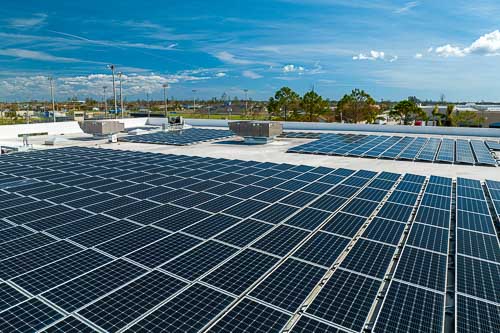Solar Design Albury Wodonga
Solar Professionals, CJ Power Solutions
 Harnessing solar energy has become a strategic decision for businesses in Australia.
Harnessing solar energy has become a strategic decision for businesses in Australia.
Commercial solar systems offer many benefits, including reduced electricity bills, enhanced brand reputation, and a significant contribution to sustainability.
However, designing and installing a commercial solar system can seem daunting.
Our comprehensive guide will demystify the commercial solar system design process and provide specific insights for New South Wales and Victoria businesses.
Phase 1: Initial Assessment and Consultation
- Energy Audit and Analysis: The first step involves conducting a thorough energy audit to assess the business's current energy consumption patterns. This analysis will identify areas where solar power can have a significant impact.
- Site Evaluation: A certified solar installer will visit the business premises to evaluate the site's suitability for solar panel installation. This assessment will consider roof orientation, shading, and available mounting space.
- System Design and Cost Estimation: The energy audit and site evaluation will enable customised solar system design. This design will outline the number and type of required solar panels, inverters, and other components. A detailed cost estimation will also be provided.
Phase 2: Permitting and Approvals
- Network Connection Application: An application will be submitted to the relevant electricity distributor (Ausgrid, Essential Energy, or United Energy) for connection to the grid. This application will require detailed technical specifications of the solar system.
- Council Approvals: Depending on the location and size of the solar system, council approvals may be required. These approvals may involve building permits or planning permits.
- Compliance with Standards: The solar system design and installation must adhere to all relevant Australian Standards and regulations, ensuring safety and compliance.
Phase 3: Installation and Commissioning
- Equipment Procurement: The solar panels, inverters, and other components will be procured from reputable manufacturers to ensure quality and reliability.
- Installation: A team of qualified solar installers will install the solar system. This process will involve mounting the solar panels, connecting the electrical components, and ensuring proper integration with the existing electrical system.
- Testing and Commissioning: Once the installation is complete, rigorous testing and commissioning will ensure the system functions correctly and safely. This process may involve performance testing, electrical safety testing, and connection to the grid.
Phase 4: Ongoing Maintenance and Monitoring
- Regular Maintenance: A preventive maintenance schedule will ensure the optimal performance and longevity of the solar system. This maintenance may include cleaning the panels, inspecting the wiring, and monitoring system performance.
- Performance Monitoring: The solar system, connected to a monitoring system, provides real-time data on energy generation, consumption, and savings. This data will be valuable for optimising system performance and identifying potential issues.
Additional Considerations for New South Wales and Victoria
New South Wales:
- Small-scale Technology Certificates (STCs): Businesses in New South Wales can earn STCs for installing eligible solar systems. These STCs can be traded for cash or used to reduce tax liabilities.
- Feed-in Tariffs: Businesses may be eligible to receive payments for the excess solar energy they export back to the grid.
Victoria:
- Solar for Business Program: This program provides rebates for businesses installing eligible solar power systems.
- Victorian Energy Efficiency Scorecard (VEESC): This program credits businesses for implementing energy-saving measures, such as installing solar power systems.
Conclusion
Commercial solar system design and installation in New South Wales and Victoria involves a comprehensive process that ensures optimal performance, safety, and compliance. By following these steps and engaging with reputable solar installers, businesses can harness the sun's power and reap the numerous benefits of solar energy.